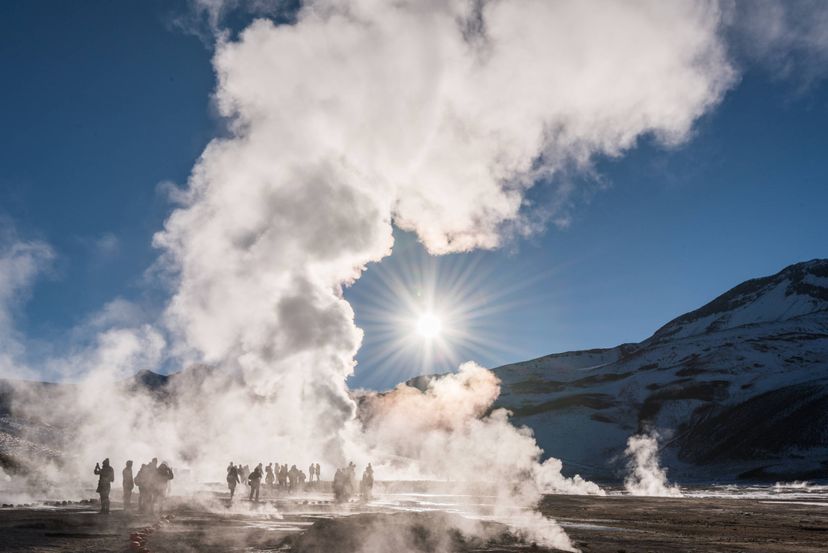
There are only about one thousand geysers in the world, most of them located near volcanoes. But they’re well worth visiting. To watch any geyser erupt – to see the steam billow and the waters burst forth from beneath the surface of the earth – is to witness a primal force of nature. And the geysers described below are among the most powerful of all.
Advertisement
1. Old Faithful
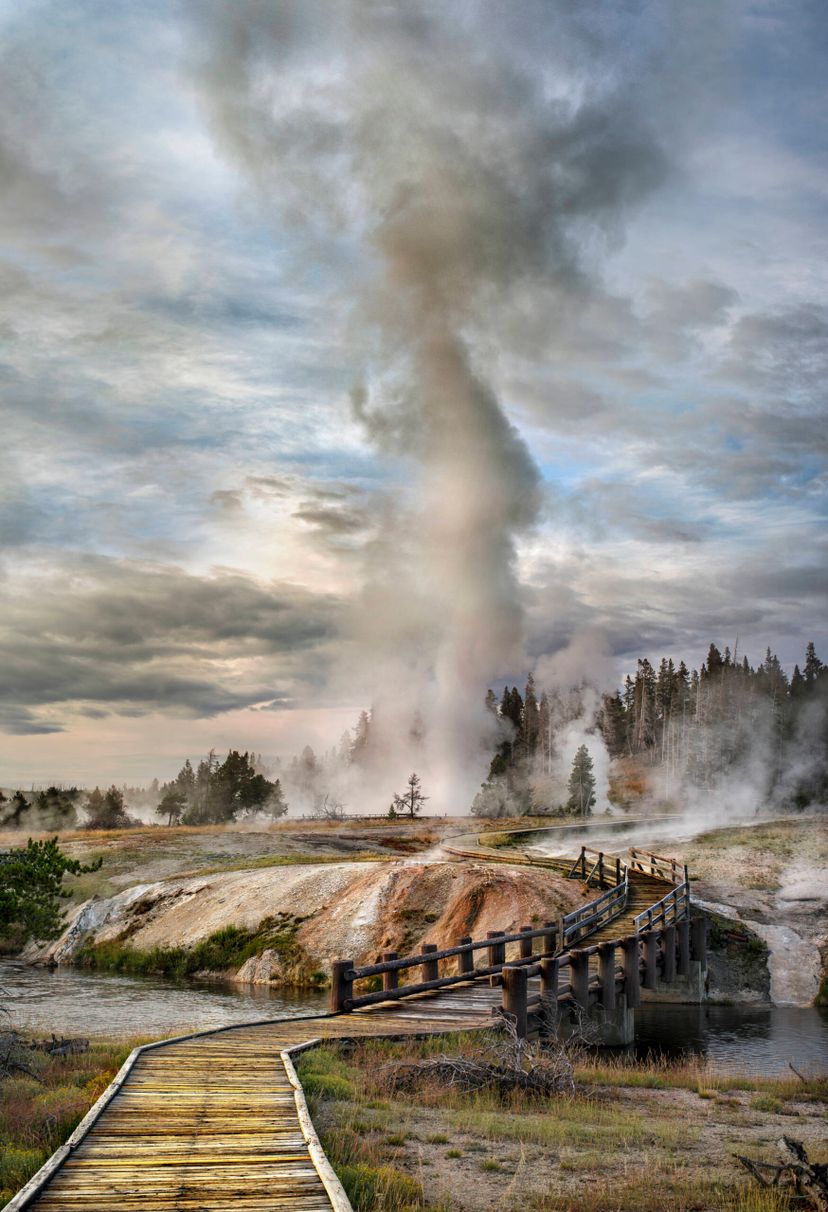
About half of all the geysers on Earth are in Wyoming’s Yellowstone National Park, a site containing thousands of hot springs. The most beloved of Yellowstone’s geysers is Old Faithful. Its eruptions can reach 180 feet and occur at least once every two hours. No other geyser is so dependable, hence the name. Be aware, though, that recently the average length of time between Old Faithful’s eruptions has increased, possibly due to underground earthquakes.
2. El Tatio
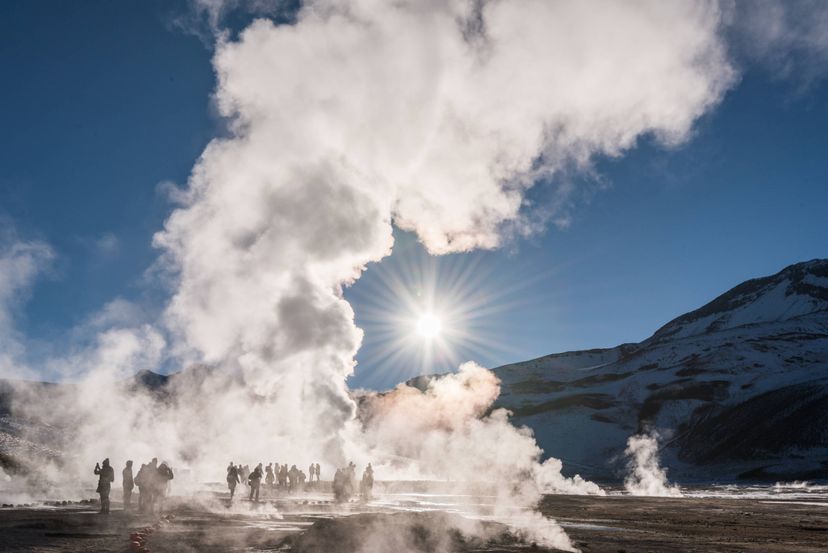
El Tatio isn’t a single geyser, but an entire field of them – the largest such field in the world. El Tatio is located in the Andes Mountains, beside the Atacama Desert, in Chile. More than 80 geysers erupt here often, and visitors can bathe in warm pools that these geysers formed. None of these eruptions is especially high, but the field is amazing to behold early in the morning when steam columns form over each geyser.
3. The Great Geysir
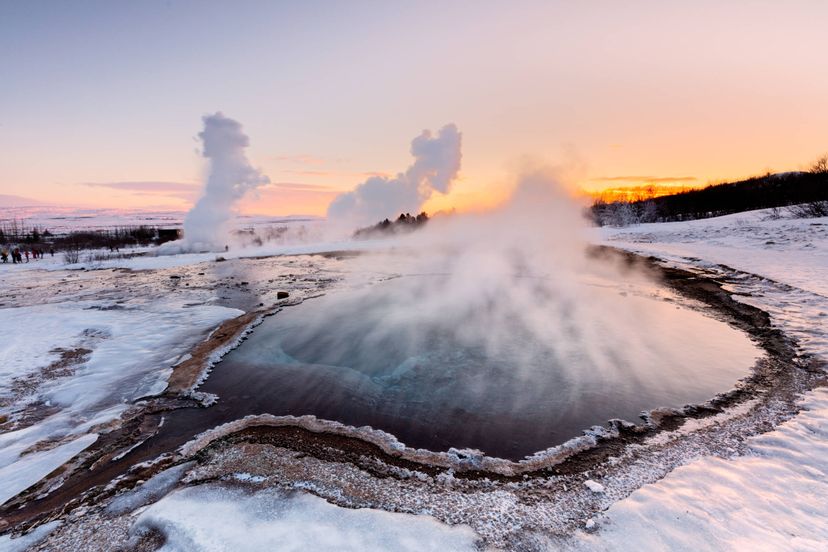
Iceland is a hotbed of geyser activity, and the first Icelandic geyser to receive a name was the Great Geysir. In fact, when explorers named the Great Geysir in 1294, it was the first instance of the word “geyser” being used. In the Icelandic tongue, the word “gjosa” means “gush.” For centuries, Geysir was known to erupt every few hours. Eruptions became less frequent as the 1800s drew to a close, and the geyser stopped erupting altogether in 1915. But twenty years later, an earthquake brought the Geysir back to life, and currently, it erupts at least once every ten hours.
4. The Lady Knox Geyser
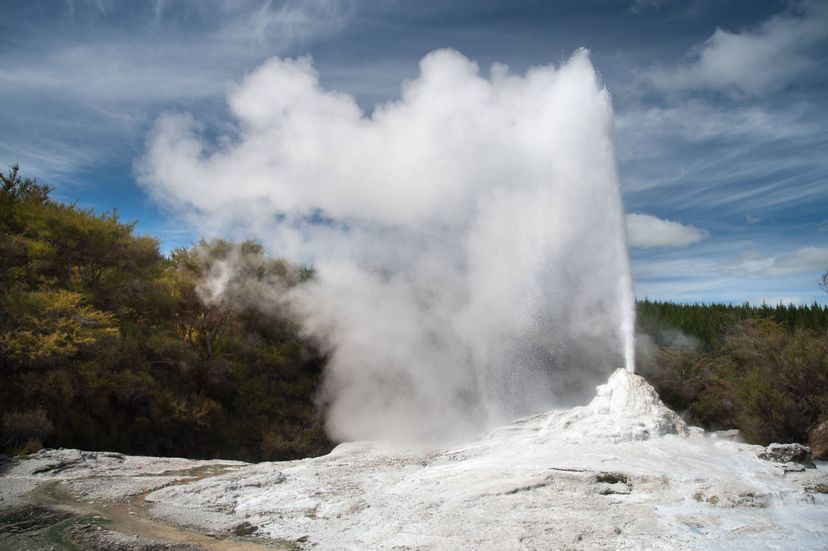
The Lady Knox Geyser was discovered in 1901 by a group of prisoners in the community of Waiotapu, New Zealand. These prisoners, who were allowed to go outside as the authorities did not consider them dangerous, were washing their clothes in the heated outdoor waters when their soap triggered a geyser eruption. The Lady Knox Geyser was named shortly thereafter for Constance Knox, the daughter of Uchter Knox, who at the time was New Zealand’s Governor-General. Now, every day at 10:15 a.m., those managing the site on which this geyser is situated drop soap into the earth in order to induce an eruption for everyone gathered.
Advertisement
5. Steamboat Geyser

Steamboat is another of Yellowstone’s impressive geysers. This one, however, is much less faithful than Old Faithful – it hasn’t erupted since 2005. In fact, it once went fifty years, from 1911 to 1961, without so much as a squirt. When it does erupt, however, Steamboat – located in Norris Geyser Basin – sure does put on a show. It can shoot water higher than 300 feet, making it the reigning champ in terms of geyser eruption heights.
6. The Andernach Geyser
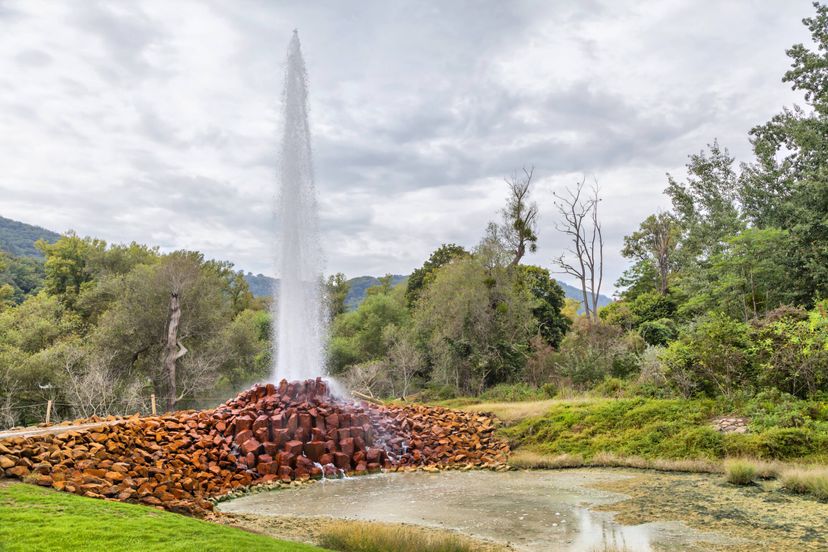
The geyser located close to the German town of Andernach is fascinating: It’s the world’s tallest cold-water geyser. It erupts approximately once every two hours between April and October, and a single eruption here can last up to eight minutes. And the water can reach a height of almost 200 feet. What causes this geyser to erupt, rather than heat, are bubbles of carbon dioxide. It’s almost as though the Earth is shaking up a giant can of soda.
7. Suwa Geyser
Japan’s Suwa Geyser can shoot water 164 feet high, and it erupts frequently. The area surrounding this geyser is lovely to visit, too. Suwa Geyser is adjacent Suwa Lake, and here there’s a hot spring pool you can swim in spots for ice fishing in the winter, and an elaborate visitor’s center. The town of Suwa is located in Japan’s Nagano prefecture.
Advertisement